In recent years many software providers have helped to address this concern, helping with eye strain and sleep patterns. F.lux is perhaps the most noteworthy of the bunch, as their application single-handedly brought the topic to the table among techies who have slowly but surely started adopting it years ago.
Major operating systems have also begun building in an option for filtering out blue light, including Windows 10 (with the Fall Creators Update), macOS, Apple iOS, Android, and Amazon's Fire tablets.
Even though the initial impression of the yellow hue effect might shock you, your eyes will ease into the change. Once the colors settle in, you won't want to go back to the regular colors during the night as they difference in eye strain will be significant.
We'll provide brief walkthroughs for some of those operating systems, but F.lux has been around for about a decade now and is available on every major platform (download here). The software uses your location to match the sun cycle in your area, gradually adjusting your display color from 6500K (daylight) to warmer colors with less blue light as nighttime approaches.
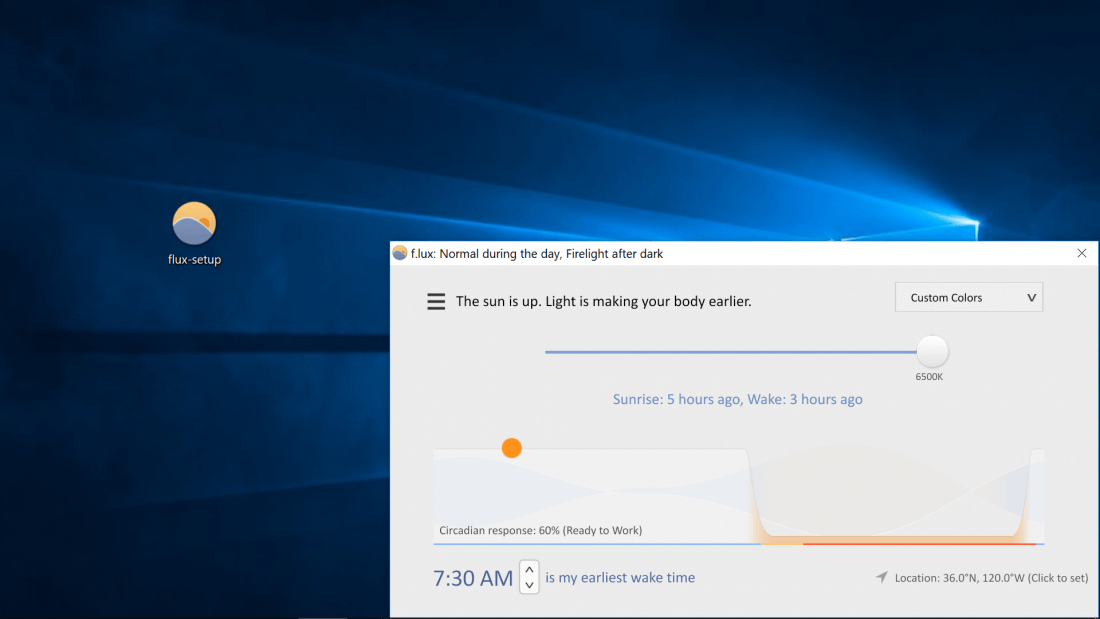
You can also manually change the temperature of your display between eight different colors, 6500K (daylight) being the brightest (blue/white) and 1200K (described as "ember") being the dimmest (orange/yellow).
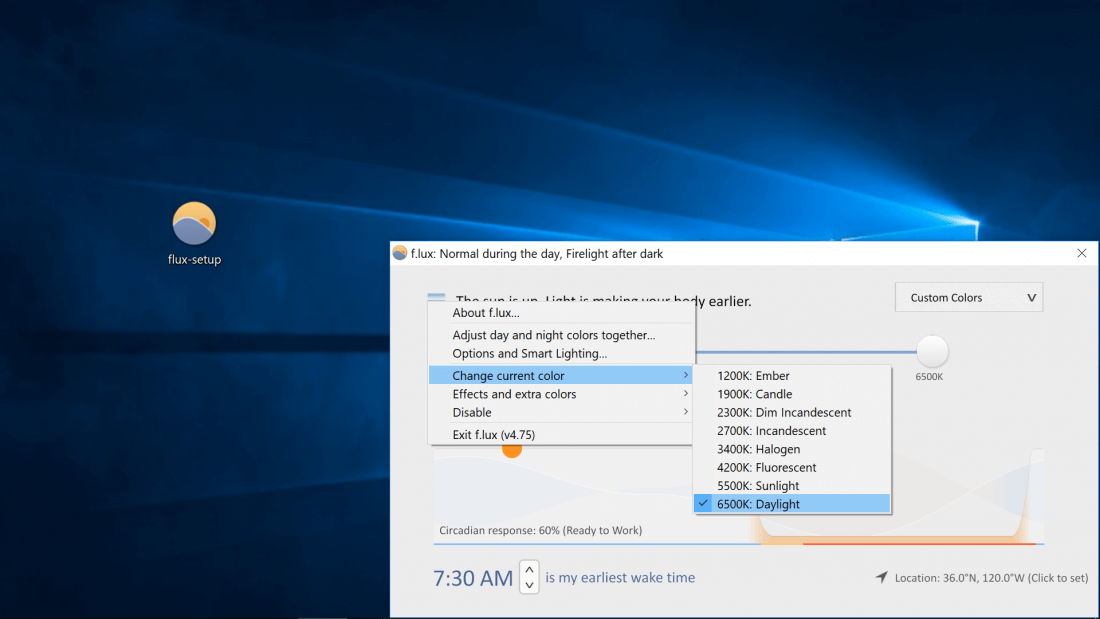
This can be reduced further by using the "Himalayan Salt Lamp" setting found under "Effects and extra colors." Other effects include "Darkroom mode" which makes your background black and text/interface red, "Emerald City" which applies a green tint, and "Soft White" which makes the daylight hue less fatiguing in our opinion, and it can be used in conjunction with the "Reduce Eyestrain" profile option.
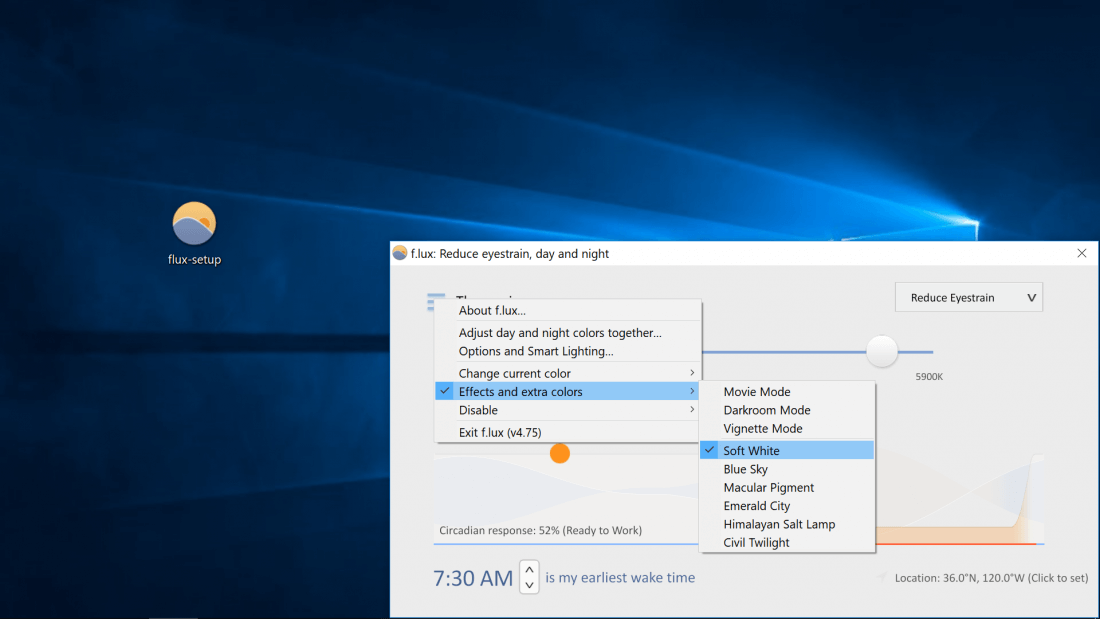
Of note, F.lux can be enabled/disabled with hotkeys and you can set it up so it disables itself automatically when you switch to and from specific applications (say, Photoshop or something where you need the color accuracy).
For those of you with connected lighting systems, the software lists support for Philips Hue, Philips ColorKinetics intelliWhite, YeeLight and LIFX.
Other alternatives to F.lux: SunsetScreen | Iris | Redshift
Folks with the Windows 10 Creators Update can enable the "Night light" feature found in Settings > System > Display, which will automatically apply a similar filter to your display as the sun sets and then remove it at the sun rises.
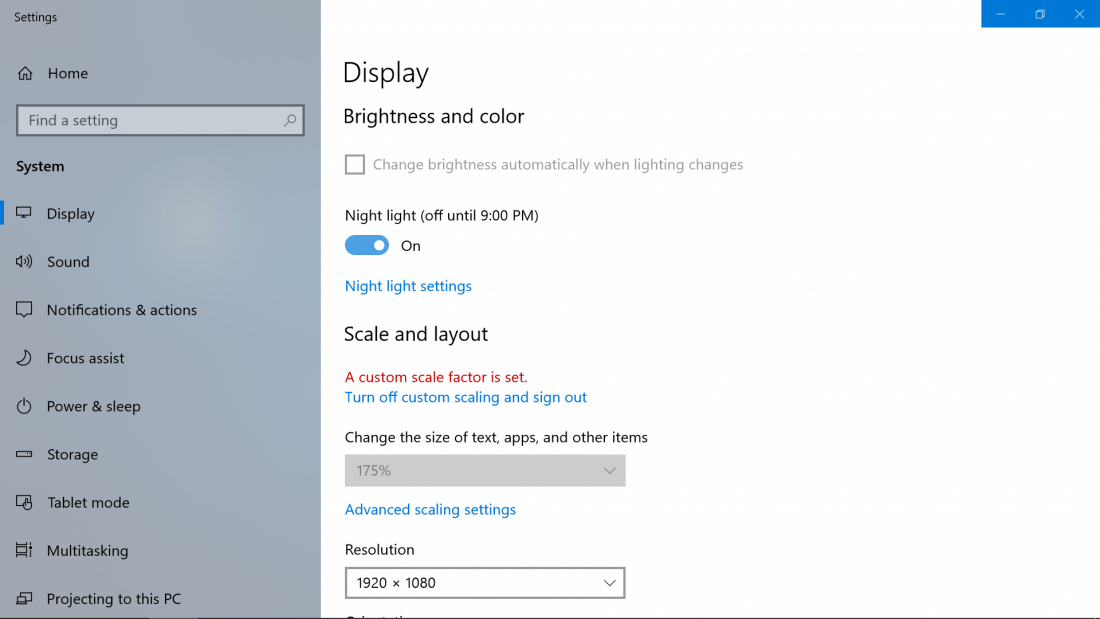
Along with the ability to set custom hours, you can tweak the temperature of the filter with a manual slider in "Night light settings" and the feature can be enabled/disabled without returning to the settings by using the button in the Action Center (beside the Windows clock).
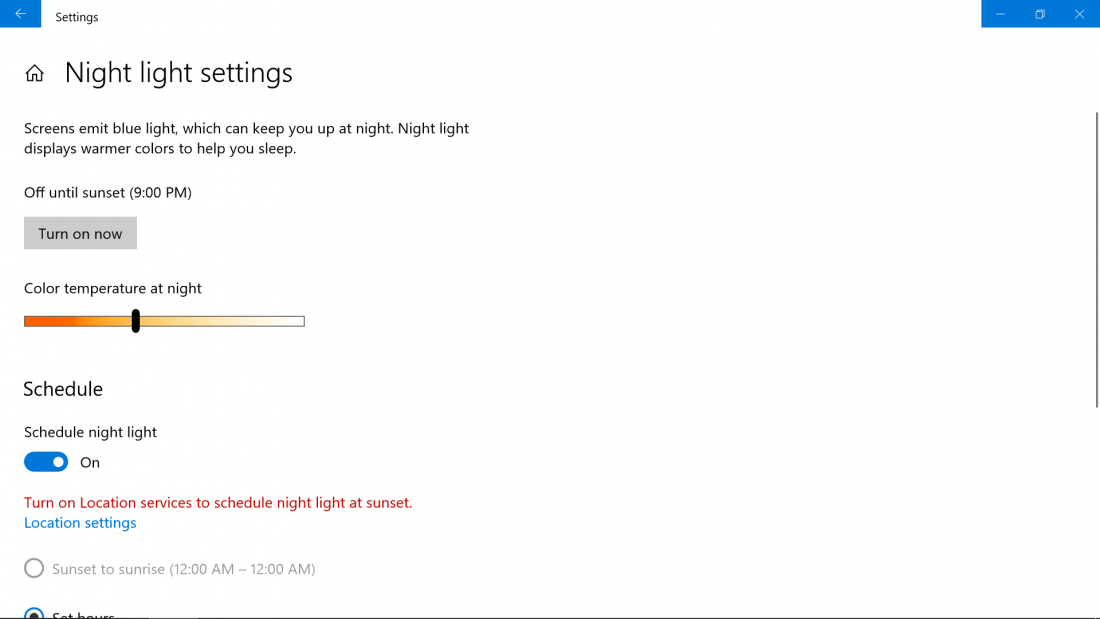
MacOS users from Sierra 10.12.4 onward have an option called "Night Shift" which can be found by navigating to SystemPreferences > Displays > Night Shift (tab)and provides about the same level of functionality as already described for Windows 10.
Night Shift is also available on select iOS devices (iPhone 5s onward, iPod Touch 6G, iPad Air and newer, iPad Mini 2 and newer, and iPad Pro), head to Settings > Display & Brightness > Night Shift.

Android N (or better) provide a "Night Light" feature. The actual name might vary depending on your phone's manufacturer but you should be able to make it out. Head to the Notifications menu >Gear icon > Display > Night Light.
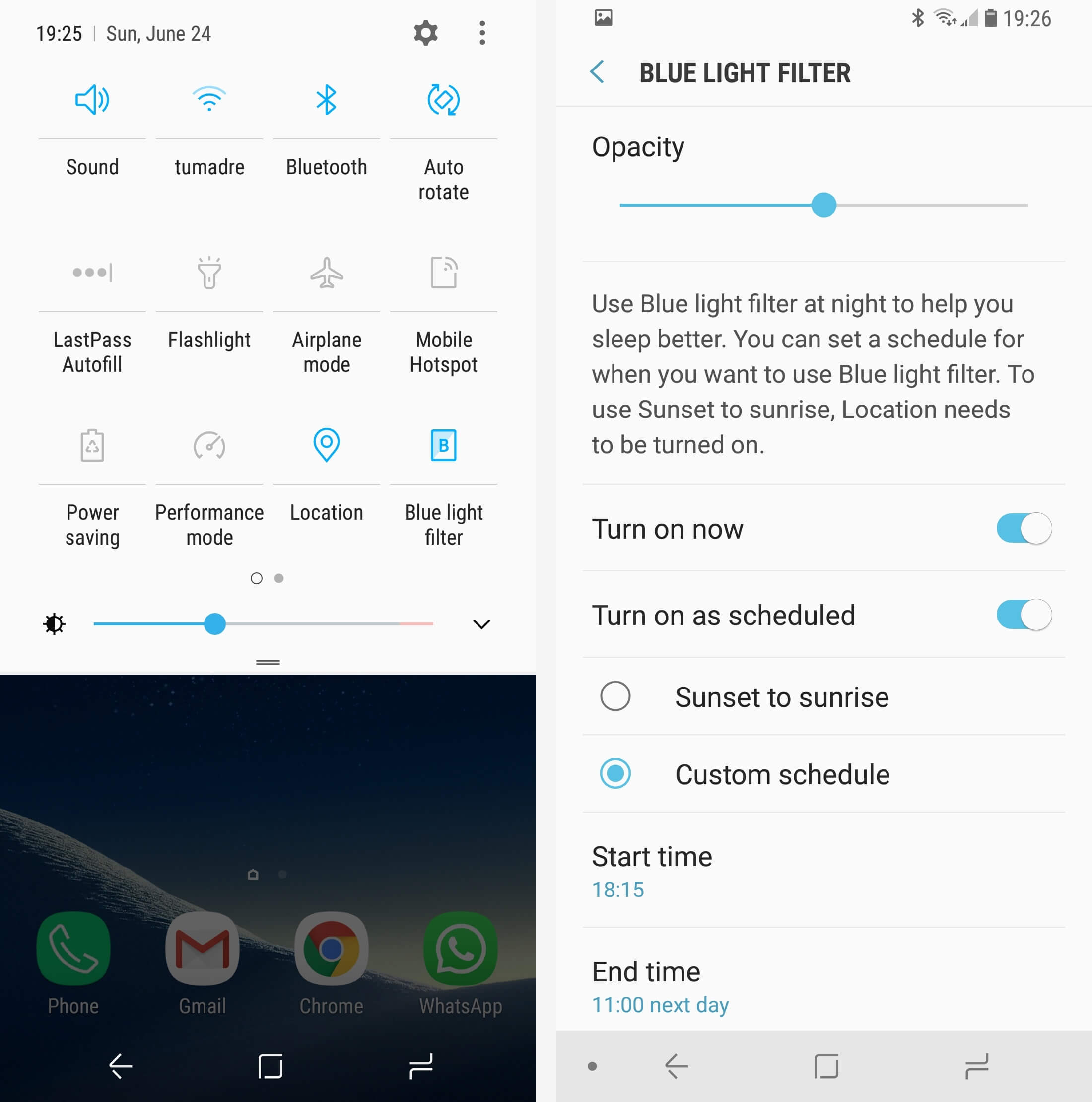
Amazon Fire tablet owners... head to Notifications menu > Settings > Display > Blue Shade.
Masthead photo: Jack Daniel Ocampo Palacios on Unsplash
(Editor: {typename type="name"/})
 I'm a college professor. My advice to young people who feel hooked on tech
I'm a college professor. My advice to young people who feel hooked on tech
 China’s Zhihu introduces AI tool to respond to users’ questions · TechNode
China’s Zhihu introduces AI tool to respond to users’ questions · TechNode
 Apple announces new password manager at WWDC 2024
Apple announces new password manager at WWDC 2024
 South Africa vs. Bangladesh 2024 livestream: Watch T20 World Cup for free
South Africa vs. Bangladesh 2024 livestream: Watch T20 World Cup for free
 Best gaming laptop deal: Save $400 on the HP Victus 15 with Ryzen 5 and Radeon RX 6550M
Best gaming laptop deal: Save $400 on the HP Victus 15 with Ryzen 5 and Radeon RX 6550M
Best robot vacuum deal: Save $140 on roborock Q7 Max Robot Vacuum
 SAVE $140:As of May 14, the roborock Q7 Max Robot Vacuum and Mop is on sale for $159.99 at Amazon. T
...[Details]
SAVE $140:As of May 14, the roborock Q7 Max Robot Vacuum and Mop is on sale for $159.99 at Amazon. T
...[Details]
NASA rover spots strange Martian rock revealing wild watery past
 Mars used to be a wildly different land. Though the red planet is bone dry today, NASA's Curiosity r
...[Details]
Mars used to be a wildly different land. Though the red planet is bone dry today, NASA's Curiosity r
...[Details]
Apple announces new password manager at WWDC 2024
 Applerevealed a new password manager at WWDC 2024, aiming to take over other leading players like La
...[Details]
Applerevealed a new password manager at WWDC 2024, aiming to take over other leading players like La
...[Details]
NASA rover spots strange Martian rock revealing wild watery past
 Mars used to be a wildly different land. Though the red planet is bone dry today, NASA's Curiosity r
...[Details]
Mars used to be a wildly different land. Though the red planet is bone dry today, NASA's Curiosity r
...[Details]
Sony launches new flagship XM6 headphones: Order them now
 Table of ContentsTable of ContentsOn May 15, Sony released its newest flagship headphones, the noise
...[Details]
Table of ContentsTable of ContentsOn May 15, Sony released its newest flagship headphones, the noise
...[Details]
WWDC 2024: Apple officially bringing ChatGPT to Siri, iOS 18, iPad OS, and macOS Sequoia
 Apple and OpenAI have officially joined forces. After months of reports that all but confirmed the d
...[Details]
Apple and OpenAI have officially joined forces. After months of reports that all but confirmed the d
...[Details]
Tesla, Huawei, Xiaomi introduce new incentives as China’s EV price war continues · TechNode
 Tesla said on Monday that it will be offering Chinese buyers 0% financing on Model 3 and Model Y by
...[Details]
Tesla said on Monday that it will be offering Chinese buyers 0% financing on Model 3 and Model Y by
...[Details]
WWDC 2024: Everything announced, from iOS 18 to Apple Intelligence
 Apple's 2024 version of its World Wide Developer Conference (WWDC) was full of news. Like many other
...[Details]
Apple's 2024 version of its World Wide Developer Conference (WWDC) was full of news. Like many other
...[Details]
 The Poverty of Theory
...[Details]
The Poverty of Theory
...[Details]
Ant Group sees insurance business boom with 30% y
 Ant Group’s insurance arm said on Monday its partner insurers reported $1.93 billion in claims via i
...[Details]
Ant Group’s insurance arm said on Monday its partner insurers reported $1.93 billion in claims via i
...[Details]
NYT Connections Sports Edition hints and answers for April 23: Tips to solve Connections #212

NASA's Voyager is sending strange messages from interstellar space

接受PR>=1、BR>=1,流量相当,内容相关类链接。